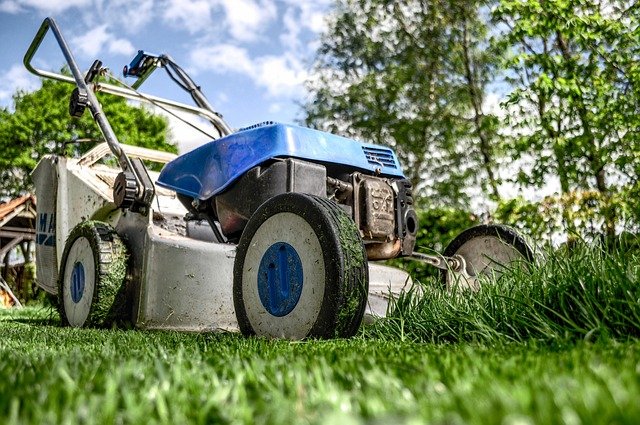Learn more about lawn mowing
Maintaining a beautiful lawn requires more than just pushing a mower across your yard. Understanding proper mowing techniques, timing, and equipment can transform your grass from patchy and uneven to lush and healthy. Whether you're a first-time homeowner or looking to improve your lawn care routine, mastering the fundamentals of mowing will help you achieve the outdoor space you've always wanted while protecting your grass from common damage.

Discover effective mowing techniques
Proper mowing technique forms the foundation of lawn health. The one-third rule remains the most important guideline: never remove more than one-third of the grass blade height in a single mowing session. Cutting too much at once stresses the grass, weakens root systems, and opens the door to weeds and disease. For most lawn types, this means maintaining a height between 2.5 and 3.5 inches, though specific grass varieties may have different requirements.
Mowing patterns matter more than many homeowners realize. Alternating your mowing direction each time prevents soil compaction and helps grass grow upright rather than leaning in one direction. Consider mowing in perpendicular patterns week to week, creating a checkerboard effect that distributes wear evenly across your lawn. Sharp mower blades are equally critical, as dull blades tear grass rather than cutting cleanly, leaving brown, ragged edges that invite disease.
Understand the best mowing schedules
Timing your mowing sessions appropriately ensures optimal grass health throughout the growing season. During peak growing months in spring and early summer, most lawns require mowing once per week. As temperatures rise and growth slows in midsummer, you may extend this to every 10 days. Fall often brings renewed growth, necessitating a return to weekly mowing until the grass enters dormancy.
The time of day you mow also influences results. Mid-morning, after dew has dried but before the hottest part of the day, provides ideal conditions. Mowing wet grass clumps and clogs equipment while increasing disease risk. Evening mowing leaves grass vulnerable overnight when moisture and cooler temperatures create favorable conditions for fungal growth. Avoid mowing during extreme heat, which compounds stress on freshly cut grass.
Explore tools for a perfect lawn
Selecting appropriate equipment depends on lawn size, terrain, and personal preferences. Push mowers work well for small to medium yards under half an acre, offering exercise benefits and precise control. Self-propelled models reduce physical effort on slopes or larger properties. Riding mowers become practical for lawns exceeding one acre, significantly reducing mowing time and fatigue.
Reel mowers provide an eco-friendly, quiet alternative for small, flat lawns, delivering exceptionally clean cuts without fuel or electricity. Robotic mowers have gained popularity for their convenience, automatically maintaining lawns on programmed schedules. String trimmers complement any mower for edging and reaching tight spaces around obstacles. Regardless of type, regular maintenance including blade sharpening, oil changes, and air filter cleaning extends equipment life and ensures quality cuts.
Get tips for maintaining healthy grass
Mowing practices directly impact overall lawn health beyond just appearance. Leaving grass clippings on the lawn returns valuable nutrients to the soil, reducing fertilizer needs by up to 25 percent. This practice, called grasscycling, works best when following the one-third rule, as shorter clippings decompose quickly without smothering grass beneath.
Adjust mowing height seasonally to support grass through environmental stresses. Raise cutting height during summer heat to provide shade for roots and retain soil moisture. Lower the height slightly in fall to reduce matting under snow and fallen leaves. Avoid scalping, which exposes soil and creates bare patches where weeds establish easily. Different grass types have specific height preferences: cool-season grasses like Kentucky bluegrass and fescue thrive at 2.5 to 3.5 inches, while warm-season varieties such as Bermuda grass prefer 1 to 2 inches.
Find resources for lawn care education
Numerous resources help homeowners expand their lawn care knowledge. Local university extension offices provide region-specific guidance on grass varieties, pest management, and seasonal care schedules tailored to your climate zone. Many offer free soil testing services that reveal nutrient deficiencies and pH imbalances affecting grass health.
Online platforms and gardening forums connect you with experienced lawn care enthusiasts sharing practical advice and troubleshooting tips. Professional landscaping associations publish educational materials covering everything from equipment selection to advanced maintenance techniques. Garden centers and home improvement stores frequently host workshops demonstrating proper mowing, fertilization, and weed control methods. Local lawn care professionals often provide consultations, offering personalized recommendations based on your specific lawn conditions and goals.
Wrapping up your lawn care journey
Mastering lawn mowing involves understanding the relationship between cutting height, frequency, equipment choice, and grass health. By implementing proper techniques, maintaining consistent schedules, and utilizing appropriate tools, you create conditions where grass thrives naturally with less intervention. Remember that lawns are living ecosystems requiring patience and observation. What works perfectly for one yard may need adjustment for another based on soil type, sun exposure, and grass variety. Start with these fundamental principles, observe how your lawn responds, and refine your approach over time. The effort invested in learning proper mowing practices pays dividends in reduced maintenance, fewer problems, and a lawn that enhances your property year after year.


